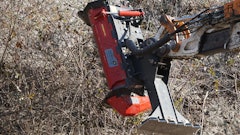Some business entities are operations oriented and some are asset management oriented. The rental business is definitely in the latter category. You want results from rental; you have to manage the assets.
Manage the assets. Sounds simple enough, but it isn't. In many ways it's tougher to manage than an operations-oriented business format.
Managing the assets means just that, meaning you have to know:
And the list goes on.
Do you know all of these things by unit, model, vendor, sector and fleet? Is the information available to you? I bet many of you think it isn't.
The point I wanted to make here is that the information is probably available. You are just not using it or have not set up your computer system to track this data. Would it help you to manage your rental activities? Sure it would. Would it help you manage cash flow? Sure it would. Would it help you make quicker, better decisions about fleet additions and deletions? Sure it would. Would it help you better understand your business? For sure. Would it make you more profitable? It should. If rental is an asset management activity, then how do you manage assets unless you have access to this type of information?
As I toured all the annual equipment conventions this year I went around and questioned software vendors that have strong rental packages. I asked them how many of their users were fully utilizing the capabilities of the rental programs. Their response was that customers, on average, only use about 20 percent of what is available in the system. Twenty percent! I thought they were kidding.
Maybe you can get away with limited information when you only have 50 units to keep track of. Get up to 300 or 400 units and it is another story. Think any of the national rental companies do without this information? I think not. They have it available on a daily, weekly and monthly basis and use it to make business decisions. If the local people don't, the home office is. Miss a couple of necessary corrections and you can bet on an e-mail, phone call or personal visit from the regional manager or troubleshooter.
Want to see what is available to you? Call your software vendor and tell them you want to review what you are currently doing and what you can be doing. They will provide you with a comparison of the entire menu against what you currently have set up in your system. Then I would ask them to prioritize what changes you could make based on the size of your company, budget, ability of your internal staff and size of the fleet. I think you will be amazed at what you see.
You will probably want to make some changes based on this analysis. Then you have to decide how you can possibly do this with your current staff. It will take time and training and dollars to get these changes made and up and running. It has to be done correctly, with a proper amount of time devoted to the project, to make it work. If you can't do this it will be a waste of time and dollars.
To make the upgrade stick requires management commitment. Everyone involved has to know it is high on the CEO's agenda. If you are going to spend the money, you have to insist the proper effort is made by all concerned. If it takes overtime and a couple of evenings and Saturdays to get it done, so be it.
If you don't have the internal resources to make the changes and input required, make arrangements with business students to help out. Get a set of internal control procedures to follow from the software vendor and let these young eager people make it happen. Most of them are comfortable with a computer and look forward to these types of opportunities to learn about business.
The goal of the game is to squeeze the most gross margin out of the least amount of assets. According to the profit planning model, if you take last year's operating results and reduce the assets employed to get the same results, your ROI increases. That's why we manage assets in the rental business.


























